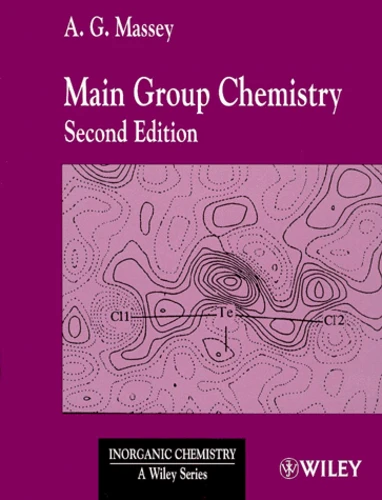Main Group Chemistry. 2nde Edition
Par :Formats :
- Paiement en ligne :
- Livraison à domicile ou en point Mondial Relay indisponible
- Retrait Click and Collect en magasin gratuit
- Réservation en ligne avec paiement en magasin :
- Indisponible pour réserver et payer en magasin
- Nombre de pages534
- PrésentationBroché
- Poids1.045 kg
- Dimensions18,9 cm × 24,5 cm × 3,1 cm
- ISBN0-471-49039-3
- EAN9780471490395
- Date de parution01/11/2000
- ÉditeurWiley
Résumé
Lately, there has been much interest in the chemistry of Main Group elements with novel compounds being synthesised both in academia and industry. This book examines their synthesis, structure and how they behave chemically.
The second edition follows the same structure as the first except that the biochemistry section has been removed to allow for the inclusion of a wide range of new material. This includes:
• Complexation and the stabilisation of unstable species;
• discussion of, for example, p-bonding in compounds of the heavier main group elements, electronegativity of F, bonding in sulfur and phosphorus oxo-anions;
• examples of new compounds developed around traditional models; for example, compounds in which multiply-bonded C is replaced by Si and pentavalent organo-derivatives of Group 15.
All other information is fully revised and updated in the light of more recent data. Where relevant, the author indicates where gaps exist in current knowledge and offers non-typical examples which are the limits of current research.
The new edition is aimed at Honors and postgraduate students as well as researchers interested in Main Group elements and their compouds.
Lately, there has been much interest in the chemistry of Main Group elements with novel compounds being synthesised both in academia and industry. This book examines their synthesis, structure and how they behave chemically.
The second edition follows the same structure as the first except that the biochemistry section has been removed to allow for the inclusion of a wide range of new material. This includes:
• Complexation and the stabilisation of unstable species;
• discussion of, for example, p-bonding in compounds of the heavier main group elements, electronegativity of F, bonding in sulfur and phosphorus oxo-anions;
• examples of new compounds developed around traditional models; for example, compounds in which multiply-bonded C is replaced by Si and pentavalent organo-derivatives of Group 15.
All other information is fully revised and updated in the light of more recent data. Where relevant, the author indicates where gaps exist in current knowledge and offers non-typical examples which are the limits of current research.
The new edition is aimed at Honors and postgraduate students as well as researchers interested in Main Group elements and their compouds.

